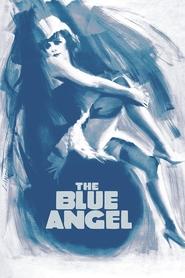Lola Lola was not the character’s name from Mann’s novel; she was originally named Rosa Fröhlich. Sternberg insisted on the change to echo the notorious character Lulu from Franz Wedekind’s plays Earth Spirit (1895) and Pandora’s Box (1904)—an iconic femme fatale of sexual liberation, murder, impassioned love, and tragic misfortune.
— Brian Eggert (Deep Focus Review)
If we had looked harder at The Blue Angel in 1931 we might have had some glimpse of Berlin's future.
— Siegfried Kracauer: From Caligari to Hitler (1947)
The personal theme of The Blue Angel foreshadows an impending social disaster. Sadism was about to be unleashed in mass form in Germany and the film is, of course, a study of the spiritual torture and humiliation of a small-town man with whom everyone can readily
identify himself.[…]
A running motif in the film is the old church clock which chimes a popular German tune devoted to the praise of loyalty and honesty (Ub' immer Treu und Redlichkeit...)—a tune expressive of Janning's inherited beliefs. In the concluding passage, immediately after Lola Lola's song has faded away, this tune is heard for the last time as the camera shows the dead Jannings. Lola Lola has killed him, and in addition her song has defeated the chimes.
— Geoffrey Wagner (Hollywood Quarterly)
[Lola's] trick will be familiar to most con artists great and small: She’s forthcoming about her deceptions, practicing a frankness that fosters a mistaken impression of complicity that encourages her john of the moment to do whatever she asks.
— Chuck Bowen (Slant Magazine)
Synopsis: Prim professor Immanuel Rath finds some of his students ogling racy photos of cabaret performer Lola Lola and visits a local club, The Blue Angel, in an attempt to catch them there. Seeing Lola perform, the teacher is filled with lust, eventually resigning his position at the school to marry the young woman. However, his marriage to a coquette -- whose job is to entice men -- proves to be more difficult than Rath imagined.

